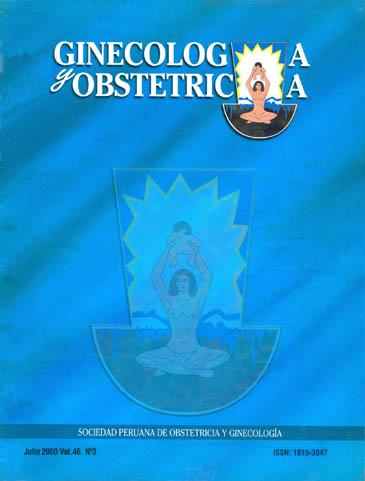Frequency, diagnosis and management of hyperemesis gravidarum.
DOI:
https://doi.org/10.31403/rpgo.v46i1415Abstract
OBJECTIVE: To determine the frequency, diagnosis and management of hyperemesis gravidarum. DlSEÑO observational descriptive retrospective study. LOCATION: Department of Gynecology and Obstetrics Hospital Cayetano Heredia between January 1994 and December 1997. SUBJECTS: One hundred twenty-six patients. RESULTS: a frequency of 0.7% in the study period, was found half the patients (52.4%) were nulliparous, 13.5% reported having presented hyperemesis in previous pregnancies, pregnancy was not desired at 19 %, it required to be readmitted 12.7%. In 59.5% he corresponded to mild hyperemesis gravidarum and 40.5% for hyperemesis gravidarum with metabolic disorders. In treating the most widely used drug metoclopramide was 84, 1% of cases. The most common complication was dehydration (40.5%), three cases of Wernicke encephalopathy was found, no recorded cases of kidney failure or maternal death. 92.1% showed improvement of symptoms in less than five days, and 91.3% was discharged before the week of hospitalization. CONCLUSIONS: a frequency of 0.7% of hyperemesis gravidarum is determined. The management allowed for a speedy recovery and shorter hospital stay without the development of hospital complications and maternal death.Downloads
Download data is not yet available.
Downloads
Published
2015-07-17
How to Cite
Salas, A., Salvador, J., Trelles, J., & Maradiegue, E. (2015). Frequency, diagnosis and management of hyperemesis gravidarum. The Peruvian Journal of Gynecology and Obstetrics, 46(3), 216–221. https://doi.org/10.31403/rpgo.v46i1415
Issue
Section
Artículos Originales
















